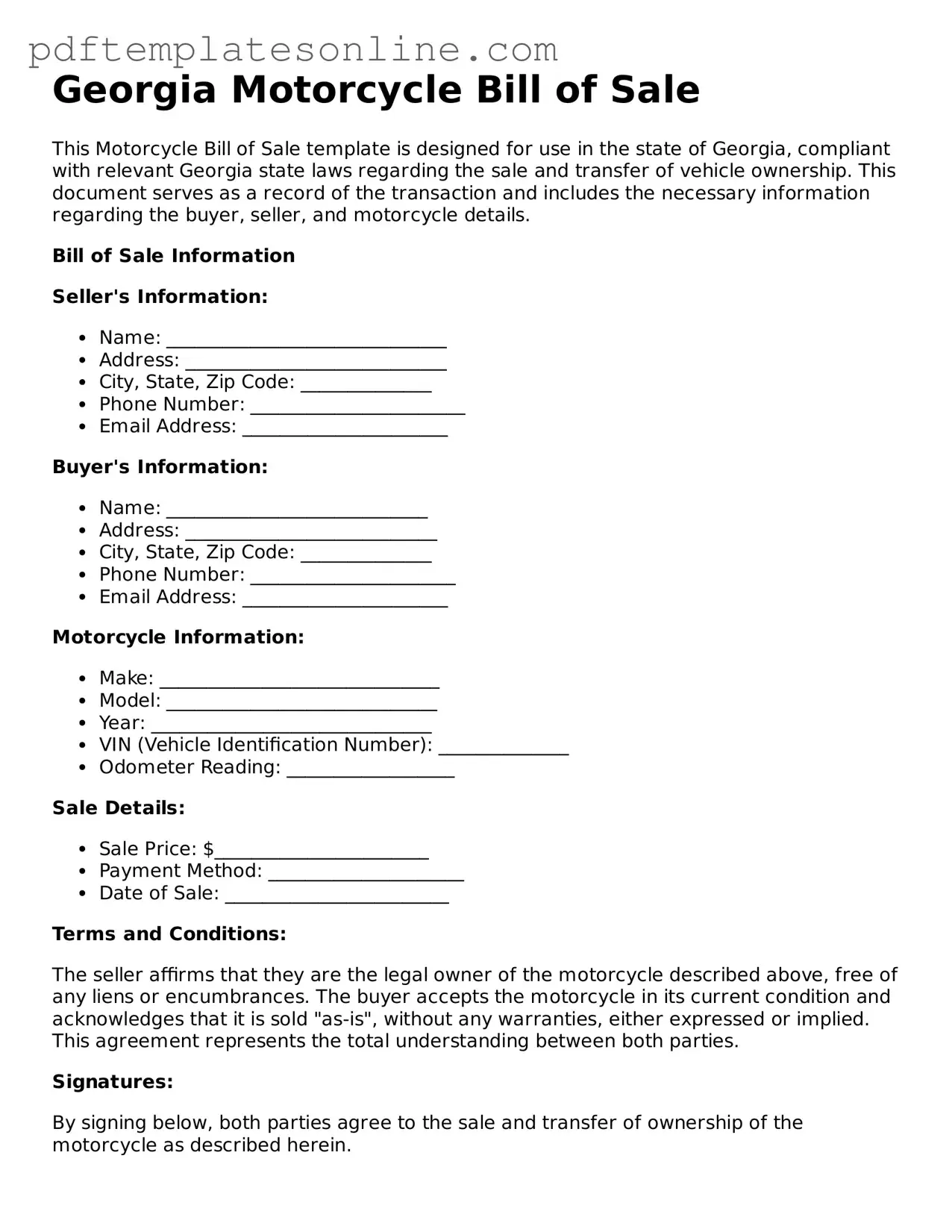Filling out the Georgia Motorcycle Bill of Sale form can be straightforward, but many individuals make common mistakes that can lead to complications later. One frequent error is failing to include all required information. The form typically asks for details such as the motorcycle's make, model, year, and Vehicle Identification Number (VIN). Omitting any of this information can result in delays or issues when transferring ownership.
Another mistake involves incorrect VIN entry. The VIN is a unique identifier for the motorcycle. If a buyer or seller misreads or mistypes this number, it could create confusion or legal problems. Always double-check the VIN on the motorcycle against what is written on the form.
People often forget to sign the form. Both the buyer and seller must provide their signatures for the Bill of Sale to be valid. Without signatures, the document lacks authenticity and may not hold up in future transactions or disputes.
Not dating the form is another common oversight. The date of the sale is crucial for record-keeping and legal purposes. Leaving this field blank can lead to ambiguity regarding when the ownership transfer occurred.
Some individuals neglect to include the sale price. This information is important for tax purposes and for establishing the value of the transaction. Failing to list the sale price can complicate future dealings or tax assessments.
Inaccurate descriptions of the motorcycle can also be a significant error. The Bill of Sale should clearly describe the motorcycle, including its condition. Vague descriptions can lead to misunderstandings between the buyer and seller.
Another mistake is not providing the correct contact information. Both parties should ensure their names, addresses, and phone numbers are clearly stated. This information is vital for any follow-up communication or potential disputes.
Some people use outdated forms or templates. Laws and requirements can change, so it's essential to use the most current version of the Georgia Motorcycle Bill of Sale form. Using an outdated form may result in non-compliance with state regulations.
Additionally, failing to keep a copy of the completed Bill of Sale is a mistake that can have consequences. Both parties should retain a copy for their records. This document serves as proof of the transaction and can be necessary for future reference.
Lastly, individuals sometimes overlook the importance of having witnesses or notarization. While not always required, having a witness or notarizing the Bill of Sale can provide an extra layer of protection and validation for both parties involved in the transaction.
